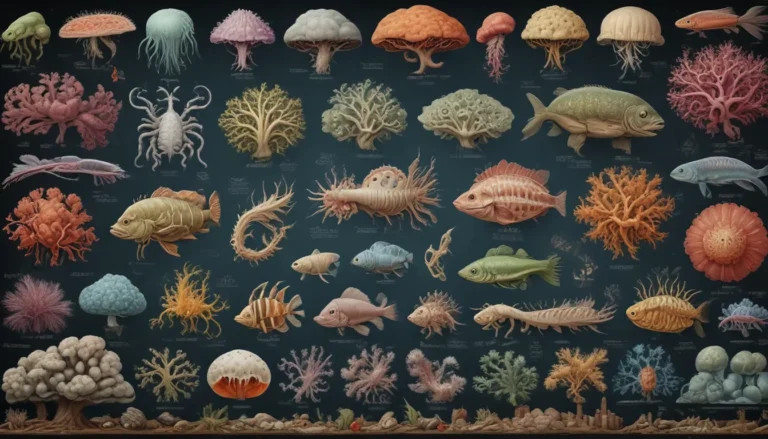A Note About Images: The images used in our articles are for illustration purposes only and may not exactly match the content. They are meant to engage readers, but the text should be relied upon for accurate information.
The human reproductive system is a marvel of nature, intricately designed to facilitate the creation of new life. From the development of eggs and sperm to the complex process of fertilization and pregnancy, this vital system plays a crucial role in ensuring the continuation of our species. In this article, we will embark on a journey to uncover 18 fascinating facts about the human reproductive system, shedding light on its intricacies and marvels.
The Genesis of Life: Development of the Reproductive System
The journey of the human reproductive system begins during the embryonic stages of development. As the embryo grows, the gonads, which are the primary sex organs, differentiate into either testes or ovaries based on genetic sex. This early development sets the foundation for the intricate functions that will define the reproductive system’s role in creating new life.
The Male Marvel: Sperm Production in Abundance
In the male reproductive system, a continuous process called spermatogenesis results in the production of millions of sperm cells daily. This impressive feat highlights the efficiency and vitality of the male reproductive organs in ensuring the propagation of the species through the delivery of genetic material.
The Female Phenomenon: The Menstrual Cycle and Ovulation
On the contrary, the female reproductive system undergoes a monthly ovulation cycle characterized by the release of an egg from one of the ovaries. This delicate process sets the stage for potential fertilization to occur, marking the beginning of a journey towards new life.
The Dance of Fertilization: Journey through the Fallopian Tubes
Following ovulation, the released egg embarks on a journey through the fallopian tubes, where it may encounter sperm cells for fertilization. This intricate dance of sperm and egg sets the stage for the formation of a zygote, a crucial step in the creation of new life.
Nurturing Life: The Role of the Uterus in Pregnancy
Upon fertilization, the zygote implants itself into the uterine lining, where it receives nourishment and support for growth and development. The uterus serves as a crucial nurturing environment, providing the essential elements needed for the embryo’s journey towards becoming a newborn baby.
Hormonal Harmony: The Key Players in Reproductive Function
The intricate regulation of the reproductive system is orchestrated by a complex interplay of hormones such as testosterone, estrogen, and progesterone. These hormones govern the menstrual cycle, sperm production, and pregnancy, highlighting the indispensable role they play in maintaining reproductive health.
Pleasure Point: The Clitoris and Its Unique Function
Unique in its function, the clitoris stands as the only organ in the human body dedicated solely to pleasure. Positioned at the top of the vulva, this highly sensitive organ enhances sexual pleasure, underscoring the diverse aspects of human reproductive anatomy.
Lifeline of Nutrients: The Placenta’s Vital Role in Pregnancy
During pregnancy, the placenta acts as a vital link between the mother and the developing fetus, facilitating the exchange of nutrients, oxygen, and waste products. This lifeline ensures the well-being of the growing baby, emphasizing the intricate mechanisms at work in sustaining life.
Milestones of Growth: The Journey of Pregnancy
The average length of pregnancy spans approximately 40 weeks, divided into three trimesters marked by specific developmental milestones. From conception to birth, this journey encapsulates the miraculous process of human gestation, culminating in the arrival of a new member of the species.
Fascinating Figures: Size Matters in Reproduction
Both the sperm cell and the egg boast unique characteristics in size, with the sperm holding the title of the smallest cell in the human body. This specialization underscores the efficiency and precision required for successful reproduction, highlighting the incredible adaptations within the reproductive system.
Power of Origin: Female Eggs and Their Finite Quantity
At birth, a female possesses around 1-2 million eggs, a finite resource that diminishes over time. This fact sheds light on the profound implications of reproductive aging and the gradual decline in fertility as a woman progresses through her reproductive years.
Divine Assistance: The Female Orgasm’s Role in Fertilization
Studies suggest that female orgasms may play a role in assisting sperm transport within the reproductive tract, potentially improving the chances of successful fertilization. This intriguing aspect of human reproduction showcases the interconnected nature of sexual pleasure and reproductive function.
Temperature Regulation: The Testes’ External Positioning for Optimal Function
The external location of the testes within the scrotum serves a vital purpose in maintaining the ideal temperature for sperm production. This strategic positioning ensures the efficiency and viability of sperm cells, underscoring the intricate adaptations within the male reproductive system.
Timeless Survival: Sperm Longevity in the Female Reproductive Tract
Once deposited in the female reproductive tract, sperm cells can survive for up to five days, enhancing the likelihood of successful fertilization. This extended viability showcases the resilience and adaptability of sperm cells in their journey towards the egg.
Shared Similarity: The Homologous Structure of Clitoris and Penis
Surprisingly, the clitoris and the penis share a similar structure, containing erectile tissue and sharing common embryonic origins. Despite their differing roles and sizes, these homologous structures highlight the interconnectedness of male and female reproductive anatomy.
A Balance of Nature and Nurture: Influences on Reproductive System
While genetics play a significant role in shaping reproductive characteristics, environmental factors, lifestyle choices, and overall health also exert a notable influence on reproductive function. This delicate balance between nature and nurture underscores the complexity of the human reproductive system.
Enhanced Understanding Leads to Informed Choices
Exploring the wonder and intricacies of the human reproductive system unveils a world of knowledge and appreciation for the miracle of life. These 18 captivating facts highlight the diverse functions and complexities of our reproductive anatomy, inspiring a deeper understanding of the incredible capabilities of our bodies. By delving into the mechanisms that drive the creation of new life, we gain insight into the importance of informed choices for reproductive health and overall well-being.
Unlocking the Marvels of Human Reproduction
The human reproductive system stands as a testament to the extraordinary wonders of biology, orchestrating the creation of new life with precision and grace. From the delicate dance of hormones to the incredible journey of sperm and egg, each aspect of this essential biological system showcases the remarkable feats of nature. Embrace the enigmatic complexities of reproduction, and unveil the secrets of the human reproductive system that make the miracle of life possible.
FAQs: Unveiling Insights into Reproductive Health
Q: How does the human reproductive system function?
A: The human reproductive system involves the production of eggs in females and sperm in males, leading to potential fertilization and pregnancy through sexual intercourse.
Q: What are the primary organs of the human reproductive system?
A: In females, the primary organs include the ovaries, fallopian tubes, uterus, and vagina, while in males, the testes, epididymis, vas deferens, and penis constitute the primary reproductive organs.
Q: Can the human reproductive system be affected by diseases or disorders?
A: Yes, the reproductive system can be impacted by various conditions such as infertility, sexually transmitted infections, polycystic ovary syndrome, endometriosis, and prostate issues in males.
Q: Are there natural methods to enhance fertility?
A: Adopting a healthy lifestyle, maintaining a balanced diet, managing stress levels, and avoiding harmful habits like smoking and excessive alcohol consumption can positively impact fertility.
Q: Is conception possible at any age?
A: While fertility typically peaks in the late teens to early 30s, it is feasible to conceive at any age as long as ovulation occurs and the reproductive system remains healthy. However, fertility tends to decline with advancing age.
Embark on a Journey of Discovery into Human Reproduction
As we unravel the mysteries of human reproduction, we unearth a wealth of insights and knowledge that deepen our appreciation for the miracle of life. By exploring the intricate workings of the reproductive system, we gain a newfound understanding of its complexities and marvels that shape our existence. Embrace the wonders of human reproduction, and embark on a journey of discovery that unveils the extraordinary capabilities of the human body.






